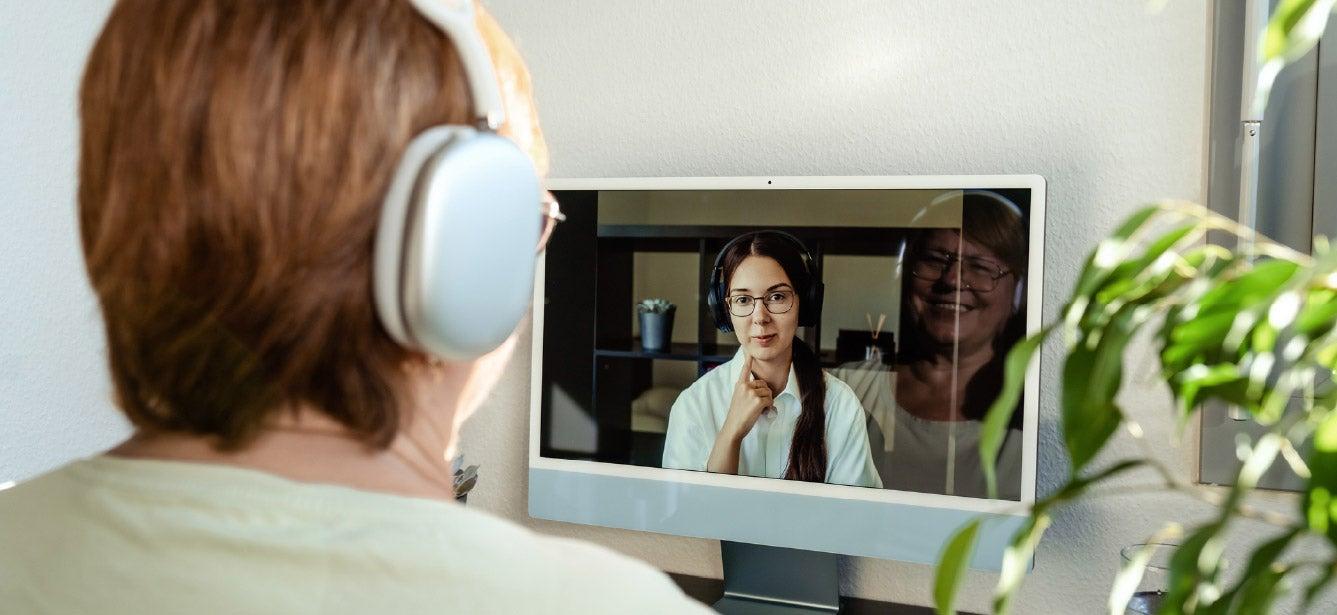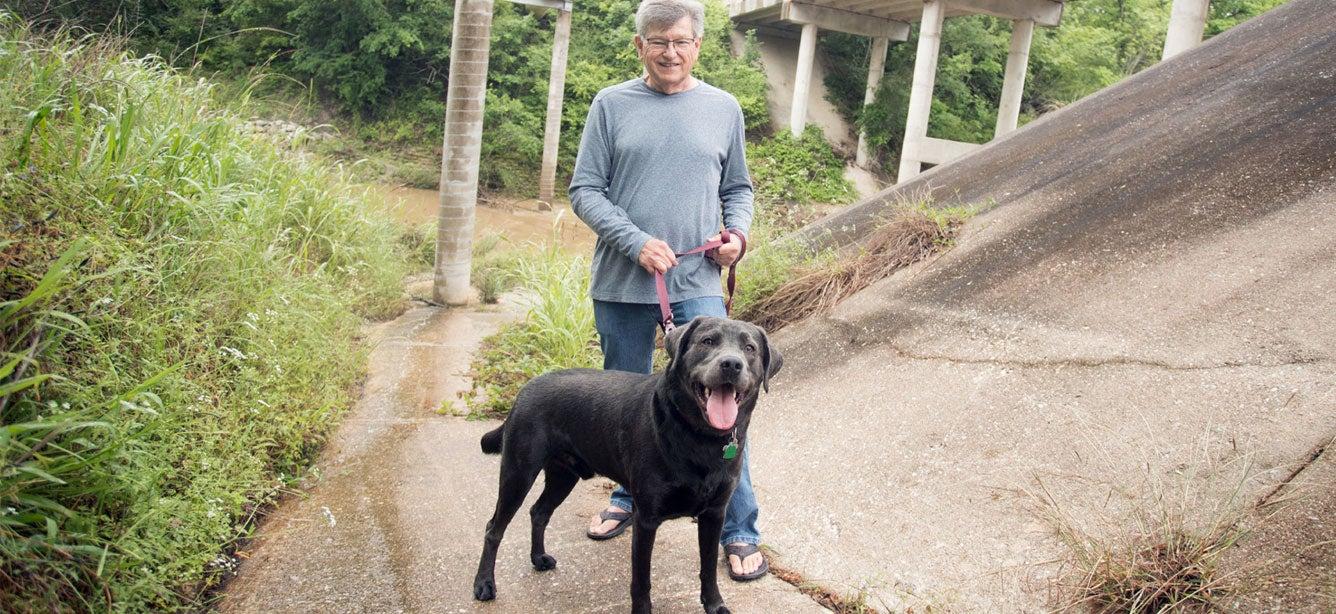
Chances are, you heard the phrase “social isolation” many times back during the pandemic. Indeed, COVID-19 was a crash course in being physically separated from other people. Suddenly, America’s epidemic of loneliness was big news—and common knowledge.
While loneliness among older adults peaked during the COVID crisis, a recent National Poll on Healthy Aging shows it’s still an issue among adults age 50 to 80. In 2023, 34% of older adults surveyed reported feeling socially isolated—a figure higher than before the pandemic in 2018 (27%).1
What's the difference between social isolation and loneliness?
It’s important to understand the difference between social isolation and loneliness. Social isolation is a state of having few social relationships, social roles, and group memberships. It also involves infrequent social interaction with family, friends, and others.
On the other hand, loneliness is someone's own personal view. It’s the distressing experience that results from one’s own perceived isolation or unmet need between a preferred and actual experience. Some people can be socially isolated but not feel lonely, and others who feel lonely may not socially isolated.
“Historically, there’s been this tendency among the general population to think of social isolation both as a rarity and as something that individual people need to figure out how to fix on their own,” explained healthy aging expert Kathleen Cameron. “Social isolation is very much a public health issue that affects millions of people across the age and demographic spectrum, but especially older adults.”
Effects of social isolation on older adults
The World Health Organization (WHO) warns that social isolation can negatively impact mortality as much as smoking, obesity, and physical inactivity do.2 It reduces longevity and quality of life and can lead to poor mental health outcomes as well.
For older adults in particular, social isolation can increase the risk for:3
- Anxiety
- Depression
- Cognitive decline
- Alzheimer’s disease
“Mobility challenges, hearing loss, a lack of transportation, grief—all of these things can prevent seniors from feeling connected to the outside world,” Cameron said.
The good news is that there are proactive steps that older adults can take to reduce the negative effects of social isolation on their mental health. Let’s take a look at what those effects are and how to address them.
Barbara, who lives alone in Buffalo, New York, knows this all too well. Even before COVID-19, a rare autoimmune disorder left this 80-year-old mostly confined to home. Trying to navigate everyday obstacles, including major out-of-pocket prescription expenses, without nearby family and friends to lean on caused Barbara significant anxiety. And once the pandemic hit, she felt completely “overwhelmed with life.”
“Barbara is an example of someone whose physical and mental health were truly at risk because of her isolation,” Cameron explains. “Her situation easily could have led to a downward spiral in both: lacking the emotional reserves to find or apply for financial assistance programs, she could have stopped filling her prescriptions or buying the food she needed to stay healthy.
“Declining physical health leads to declining mental health and vice-versa,” Cameron added. “That’s why it’s so important that isolated older adults have access to the necessary mental health support that they need.”
What are the symptoms of social isolation in older adults?
Fortunately, an outreach worker from the local food bank encountered Barbara during a mobile food pantry event and ultimately helped her apply and qualify for SNAP benefits. Now, Barbara can afford both her groceries and her medications. Plus, she has a new friend at the food bank.
“I’m so grateful someone noticed me,” Barbara said.
Would you notice the signs of social isolation in someone else—or yourself? Barbara clearly was by herself, but other indicators aren’t so obvious. According to a broad range of experts, symptoms of social isolation can include, but aren’t limited to:
- Unusual irritability or conversely, apathy
- Avoiding other people
- Poor self-care
- Increased substance use, such as alcohol and prescription drugs
- Thoughts of suicide
How do you prevent or reduce social isolation in older adults?
Navigating social isolation can seem challenging, especially for older adults—but it’s not impossible.
“Taking steps, even small ones, to reconnect with the outside world can go a long way,” Cameron suggested. “While COVID is still a concern, and we all need to remain careful, there are ways to safely interact with others in social situations now.”
Not sure where to start? Cameron suggests ideas such as:
- Volunteering in the community
- Visiting your local local senior center and participating in a new activity
- Re-engaging in an activity you've enjoyed in the past, like going to the movies and playing cards with friends
- Cultivating a new hobby with others—like mah-jongg or pickleball
- Attending a congregate meal
- Using technology to connect with far-away family and friends
“Each of these activities provides opportunities to rebuild confidence and cultivate old and new friendships,” Cameron said.
Online therapy can also be an effective tool for older adults who want to overcome feelings of loneliness and isolation.
Online therapy and peer support programs for older adults
Also known as telehealth therapy, online therapy allows patients to meet with providers from the comfort of home using their computer or smartphone. Some online therapy platforms also include group therapy options and peer support programs. These, according to Cameron, can feel more comfortable for some older adults than one-on-one counseling.
“Participating in group sessions reinforces that you’re not alone. It also helps forge those human connections that are so important,” she said.
Are support groups for older adults free?
There may be in-person community support groups offered in your area at no cost. Check with your local senior center, weekly newspaper, or faith community to learn about available opportunities. You can also try typing “peer support groups near me” into Google.
The bottom line
The pandemic shone a spotlight on social isolation and its negative effects on physical, emotional, and mental health. And this problem persists years later. In the 2023 National Poll on Healthy Aging, 37% of older adults reported feeling a lack of companionship. Plus, 33% of respondents said they had infrequent contact with those outside their household. While these rates are notably lower than in 2020, they're still high.1
The good news is there are effective strategies for overcoming social isolation and rebuilding community connection. If you need or want a little extra guidance and encouragement, online group therapy and virtual or community-based peer support programs are a great place to start.
Sources
1. University of Michigan - National Poll on Healthy Aging. Trends in Loneliness Among Older Adults from 2018-2023. Found on the internet at https://www.healthyagingpoll.org/reports-more/report/trends-loneliness-among-older-adults-2018-2023
2. World Health Organization. Reducing social isolation and loneliness among older people. Found on the internet at https://www.who.int/activities/reducing-social-isolation-and-loneliness-among-older-people
3. National Institute on Aging. Social isolation, loneliness in older people pose health risks. April 23, 2019. Found on the internet at https://www.nia.nih.gov/news/social-isolation-loneliness-older-people-pose-health-risks


